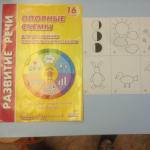How to teach a child to chew solid foods? Relevance of the issue
How to teach a child to chew solid foods? This question worries all parents. In this case, hunger comes to the rescue. It is he who, being a powerful stimulus, helps the newborn to adapt to the breast. It is much more difficult for a child to learn to chew. And the very process of switching to solid dishes is sometimes complicated by the parents of the baby, using only pureed food in his diet.
How does the process of changing the diet take place?
You don't need to force your child to chew. Gradually, in the process of complementary feeding, thicker foods should be added to the baby's diet, which is not enough to simply swallow. Then the child will have to start working with his jaws, tongue, lips, forming a lump of food, then moving it to the neck, and there the triggered swallowing reflex will help him.
Many mothers worry that they cannot find an answer to the question of how to teach a child to chew solid food. This is a well-founded concern. Since it is harmful to keep the baby on mashed potatoes and cereals for a long time. Digestion should work in accordance with the development of the child, and should not become "lazy" due to the fact that only liquid and tender dishes are present in the daily diet. Enzymes and gastric juice are poorly produced because the food is practically not saturated with saliva. If you offer a grown-up baby a soft meal, the flow of blood to the organs of the digestive system gradually decreases, which leads to a weakening of the work of the stomach itself. Also, the lack of face training can adversely affect the formation of its shape and oval, but the worst thing is the development of the bite.
How to teach a child to chew?

Each baby has its own character, individual addictions to certain foods. In addition, human organisms work in different ways. Therefore, there are no specific instructions on how to teach a child to chew solid foods. This fact is due to the lack of their practical necessity, individual characteristics of the organism and character.
Most often, the crumb is too lazy to chew only because the parents themselves deprive him of even the slightest opportunity to try. Cooking takes a long time, and reheating ready-made store purees is a matter of minutes, the more the child eats them with pleasure and gains the necessary weight. But in fact, there is nothing difficult in the question of how to teach a child to chew food on their own. This is a fairly simple process, it only takes time and the creation of the necessary conditions. Usually children cope with solid foods without any problems. But for some, it is still difficult to cope with compacted dishes even after nine months. Such a temporary phenomenon is most often due to the fact that babies are disturbed by which, while chewing, injures the gums, creating painful sensations.
When is the best time to teach a child to a new diet?

From about eight months, you can periodically offer the crumbs slightly thickened clots of porridge, small pieces of fruits or vegetables, bread, drying or cookies. It is important to switch to a thicker diet in time so that the child gets used to working with his lips, tongue and jaws. In general, the sooner dense meals are added to the diet, the better. As soon as the baby's first teeth appear, even the incisors are a signal that you can start adding solid food to his diet.
How can you teach your child to chew solid foods faster? Gradually, the baby can be seated at an adult table. This is one of the most effective ways. All toddlers love to taste dense foods, grabbing pieces of vegetables or meat from the plates of adults. If the child does this with pleasure, then from eight months you can give him noodles, potato soups or steamed cutlets. The main thing is to carefully monitor so that the baby does not accidentally choke.






